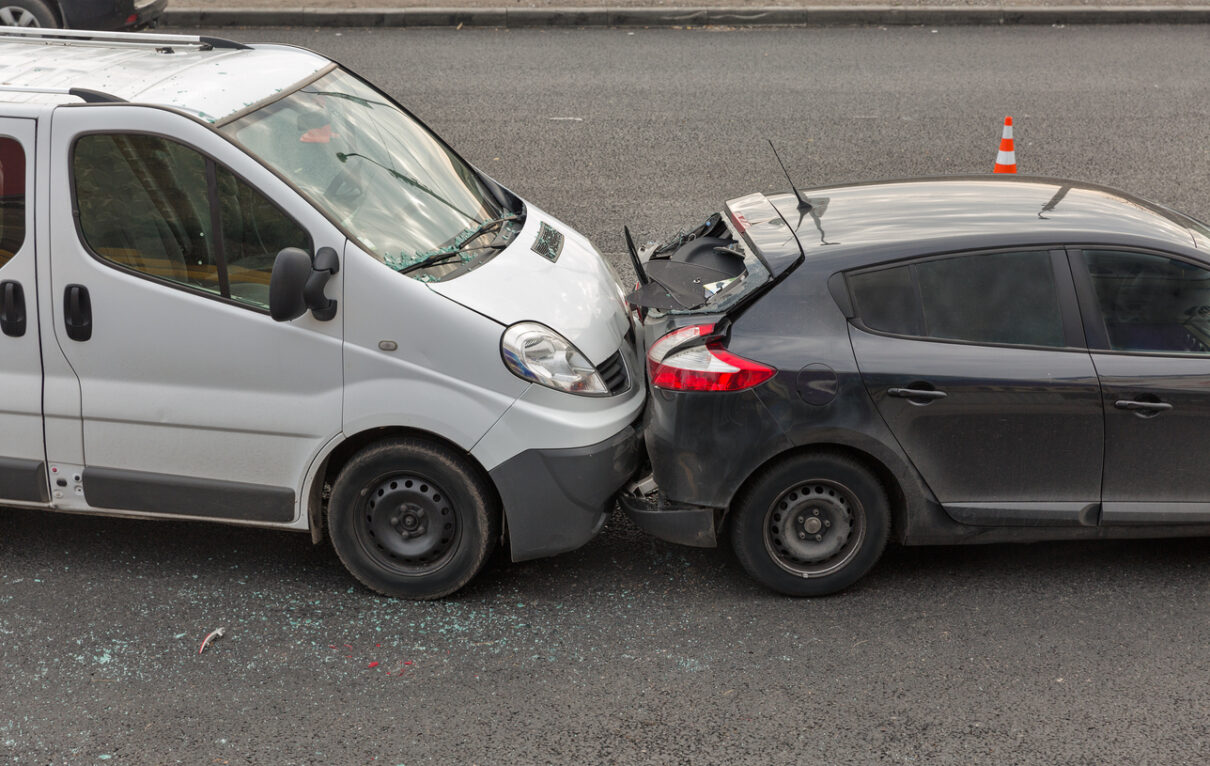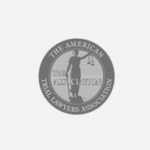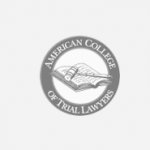Over $600 million in
verdicts & settlements
for our clients.
$185,000,000
Verdict
ERNST & YOUNG
Accouting Malpractice
$150,000,000
Verdict
EXXON MOBIL
Gas Leak
$25,000,000
Verdict
BELL ATLANTIC
Business Fraud
$11,800,000
Verdict
PERSONAL INJURY
The alarming frequency of auto accidents is something we don’t like thinking about a lot. Nevertheless, you’ll agree with me that auto accidents are a frontline cause of catastrophic injuries and fatalities in America and the world. In fact, this publication by The National Highway Traffic Safety Administration (NHTSA) shows that 32,675 people lost their lives in car accidents in 2014 alone.
Worse yet, the NHTSA’s car accidents data for the next 6 years after this, only indicates that traffic accidents and fatalities have been escalating.
What Are Catastrophic Auto Accidents?
Sustaining a catastrophic injury after a severe auto accident can leave the victim partly impaired or entirely disabled.
Common catastrophic car accident injuries include:
- Traumatic fractures such as head, rib, and limb fractures
- Neck injuries
- Spinal cord injuries
- Traumatic brain injuries
- Severe burns
- Internal organ damage and bleeding.
Along with the above, medical malpractice and complications can escalate normal injuries into severe injuries.
At best, a catastrophic auto accident leaves the victim with a lifetime of pain, suffering, and turmoil. The victim’s life takes an upside-down flip for many reasons, including:
- Limb amputation
- Loss of gainful employment or business
- Need for costly surgical intervention
- Continuous medical care
- Daily personal care.
Possibly the worst part of sustaining a catastrophic injury from a car accident is that it changes the victims’ lives forever and affects their loved ones. Moreover, the victims sustain mental trauma and can spend a big portion of their lives in rehab.
In the worst-case scenario, a catastrophic car accident takes the lives of the victims. Whatever the case, understanding the common types of catastrophic car accidents and consequent injuries is critical to seek the best care, compensation, and settlement after the incident.
Common Types of Severe Auto Accidents and Their Causes
Whenever you get behind a car’s wheel, you accept the risk of a car accident anywhere, anytime. Interestingly, one would think that catastrophic car accidents only happen on busy urban streets and high-speed freeways and highways.
The fact is severe motor vehicle accidents can happen almost everywhere. For example, they occur in urban roads and driveways, on suburban roads, freeways, and country roads, and other rural settings. In fact, most car accidents ambush most drivers within 25 miles of their home, according to these statistics.
Let’s jump right in. Here are the most common types of severe car accidents on our roads:
Head-on Collisions
Also called frontal-impact car accidents, head-on collisions are among the deadliest car accidents. They happen when the front parts of two cars collide with each other. Alternatively, head-on collision accidents occur when the front part of an auto smacks into other objects on the road, counting trees, animals, or other obstructions.
You guessed it! Head-on collisions often occur at high speeds and are often called crashes. They’re also caused by drunk driving, distracted driving, drug impairment, sleepiness, road and traffic sign negligence, and reckless lane switching.
Along with this, additional road hazards such as fog, snow, ice, or rain compound the risk of head-on car accidents.
Such accidents are common at road intersections.
Interestingly, head-on collisions account for approximately only 2% of all car accidents in the U.S. Nevertheless, they’re usually fatal and account for more than 10% of driving-related fatalities. They result in severe internal organ damage, including traumatic brain injury and catastrophic physical injuries such as spinal cord injuries, fractures, dislocations, and concussions.
It doesn’t end there. Survivors of head-on car accidents can get paralyzed or sustain other permanent disabilities such as perpetual loss of motor, cognitive, and sensory abilities.
Side-Impact Collisions
In a side-impact car collision, also called a T-bone accident, a car smashes head-on into another vehicle’s side in a characteristic T shape. Side impact car accidents also encompass a single-vehicle ramming into objects such as light poles, electric posts, or fire hydrants with its side.
Strictly speaking, most T-bone car accidents occur at intersections, when vehicles are overtaking, or in parking lots. Interestingly, they often result from the failure of one driver to yield the right of way.
It’s not surprising that most side-impact auto accidents can be attributed to distracted driving, driving while intoxicated, or reckless driving where the at-fault driver runs a red light.
Whatever the case, T-bone car accidents can result in different catastrophic injuries counting spinal cord injuries, bone fractures, lacerations, traumatic brain injuries, internal bleeding, or death.
Check this out: According to this NHTSA report, side-impact collisions account for roughly 28.9% of all car accidents and almost a quarter of car passenger deaths in the U.S.
Rear-End Auto Accidents

Rear-end car collisions account for nearly 40% of all motor vehicle accidents in the U.S. In fact, this is the most common type of vehicular accident in urban streets and busy roads. Rear-end collisions occur when the front end of one car crashes into the rear of the car in front.
You may wonder what causes so many rear-end car accidents. Mostly, they’re the result of:
- Sudden braking, deceleration, or stopping of the car in front
- Tailgating- following the car in front a little too closely.
Here’s another way to look at this: The car in front can decelerate or stop suddenly due to several factors:
- Unfavorable turn of the weather
- Mechanical breakdown
- Poor driving skills or inexperienced driving
Here’s the scary part: In most rear-end car collisions, the car’s driver in the rear is held liable. If you’re wondering why this is the case, the rear driver should always leave sufficient room between their vehicle and the one in front for safe stopping.
Luckily, most rear-end collisions occur when the front vehicle stops or both vehicles move relatively slowly. This reduces the fatalities of rear-end car collisions to a mere 5% of car accident fatalities across the U.S.
But there’s a catch: this type of car accident still results in catastrophic injuries to victims. The type and severity of the injuries depend on the speed of the car behind and the relative distance between the two vehicles at the time of impact.
Indeed, rear-end car collision accidents can lead to whiplash, concussions, and fractures.
Rollover Auto Accidents
A rollover accident occurs when a car flips or rolls over onto its roof or side. Typically, rollover accidents are caused by a tight steering wheel flip to take a corner at high speeds. Then again, a vehicle can rollover due to a high-speed collision with another vehicle or obstacle on the road.
Fortunately, rollovers are rare compared to other car accidents and are responsible for about 2% of car accidents and approximately 16% of car accident fatalities across the U.S.
Still, rollover car accidents account for more than 35% of fatal car crashes throughout the U.S and are among the most dreadful car accident types in the region.
Multi-Vehicle Collisions
Multi-vehicle collisions involve three or more vehicles crashing into each other. Also known as pile-up car accidents, they typically happen on highways, freeways, and busy roads where vehicles mostly travel at high speeds.
In a similar fashion to most front-impact car accidents, multi-vehicle collisions are characteristically catastrophic. In fact, they can be more severe as vehicles can collide multiple times and at various angles, often resulting in more victims and fatalities. That’s not all. Auto pile-up accidents lead to all manner of catastrophic injuries ranging from whiplash to fractures, concussions, spinal cord injuries, paralysis, and even death.
What Next After Catastrophic Auto Accidents
If a loved one is incapacitated by a devastating car accident, their care – medical care, finances, and insurance settlement – falls onto someone else. I’ll be bluntly honest here- you’ll find it inconveniencing, challenging, and costly to handle all this yourself. Insurance companies of the at-fault driver may try to trick you into accepting liability for the accident.
Here’s a secret: whatever type of auto accident, it’s critical to consult a reliable car accident lawyer. At Weltchek, Mallahan & Weltchek, our premier and acclaimed personal injury attorneys are always ready to help. Even better, we leverage unsurpassed experience in handling personal injury and malpractice cases, diligent professionalism, intricate knowledge of Maryland’s legal structure, and proven reliability from tackling complex cases to offer you supreme representation.
We’ve taken on some of the most feared cases in Maryland and won over $500 million in settlements. The best part is that our personal injury advocates are caring people who listen to you with gentle patience before offering first-rate counsel on the best way forward.
Reach out to Weltchek, Mallahan & Weltchek via phone call (410-825-5287), live chat, Twitter, or fill out our confidential contact form for a free consultation and case evaluation.
Who Can You Trust with Your Case?
Have you or a loved one been injured due to negligence? We want to help. Don’t hesitate to contact us if you believe you have a case; time is an important factor. Interested in learning more? Get in touch with us so we can better evaluate and serve your needs in getting the justice your loved one deserves. You may very well be entitled to compensation.

Call For a Free Consultation









